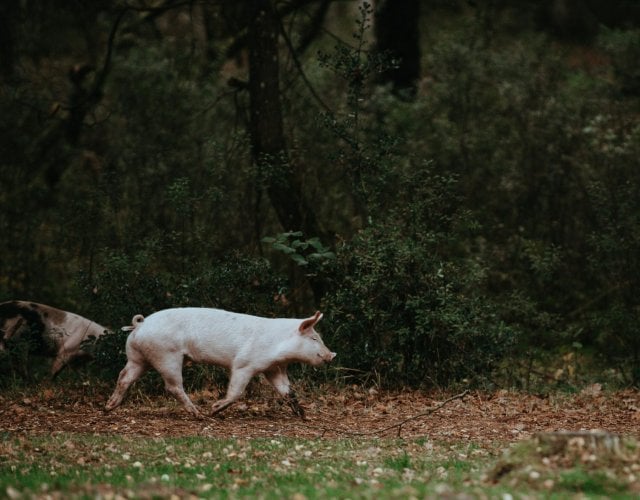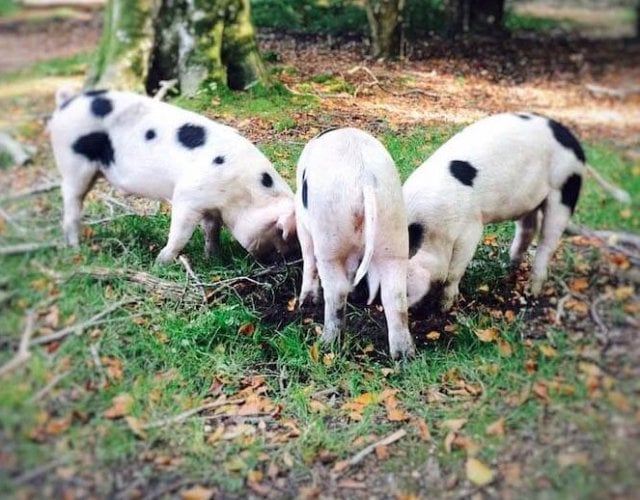
The free-roaming ponies of the New Forest are a common and well-known sight in the area, but at certain times of year, you’ll see another animal taking centre stage, wandering woodland trails and country lanes. Here, we’re talking all things New Forest pigs!
The New Forest has a long history of free-roaming animals – you’ll often see these famous residents passing through villages and meandering across roads. Roaming animals you might come across include ponies, donkeys, cows, sheep and, of course, pigs.
Although they are loose in the forest, these pigs are domestic, not wild. Each pig will have an ear tag to identify it and a nose ring to minimise any damage to the forest floor. Around 200-600 pigs roam freely each year.
To find out more about some of the region’s other iconic animals, see our guide to New Forest ponies.

The pigs are owned by locals known as ‘commoners’. Commoning is an ancient practice that dates back to William the Conqueror, which allows commoners to legally release their livestock into the open forest to roam and graze freely.
There are six registered Common Rights, with one of them being ‘Mast’, which refers to the act of turning pigs out across the New Forest during pannage season.
Pigs are released into the New Forest during what’s known as pannage season. The exact dates of pannage are decided by Forestry England and the Verderers (forestry officials who regulate common land), but it usually falls between late September and late November.

Pannage season is based on the amount of acorns that have fallen and other seasonal factors, which is why it may change each year. If there is an abundance of acorns, the season may be extended to late December.
However, pannage generally lasts about 60 days, and it is the only time pigs are permitted to roam freely. During this time, the pigs will forage across the forest floor, eating up fallen acorns and anything else they can find.
This is a vital process because, while a mere tasty snack for the pigs, acorns can be poisonous to the ponies and cattle that wander the forest all year long.
The pigs are free to roam as they please, so there aren’t any set spots where you’re guaranteed a sighting during this season. One of the best ways to see pigs in the New Forest is to head out on a walk on one of the ancient woodland walks, as this is where they’ll be sniffing around for food.
Bolderwood is often a popular spot for the pigs, so walks through here may provide a glimpse of them. Listen closely and you may hear them rooting around the undergrowth and forest floor!
Walks around Burley, Bramshaw, and Fritham are also often good locations for spotting pigs during pannage.

As with other New Forest animals, it’s important that you keep your distance from the pigs and let them do their thing. To keep yourself and the pigs safe, do not touch or feed them (they’ll have plenty of acorns to eat!), as they may behave unpredictably.
Free-roaming animals have the right of way on roads, so drive carefully, especially when encountering them directly on the road.
Dogs should also be kept under close control around the pigs and other animals and not allowed to chase them or get too close.
If you want to escape to the New Forest and experience the joys of free-roaming animals and gorgeous woodland walks for yourself, our luxury New Forest holiday cottages provide the perfect base. Wake up to views overlooking the open forest to reconnect with nature and live life in the slow lane.
If you’re particularly interested in visiting when the pigs are out and about, check out our October half term getaways.